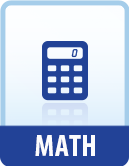|
This section contains 2,051 words (approx. 7 pages at 300 words per page) |

|
The basic architecture of today's electronic computers originated in a design proposed in the 1830s by Charles Babbage (1792–1871), a British professor of mathematics. The ideas that he wanted to embody in a huge steam-powered mechanical computing device were finally realized only in the mid-twentieth century, using relays and electronic circuits. Since then, computers have evolved from room-sized mainframes to desk-sized minicomputers to today's laptop and palm-sized microcomputers and the miniature digital signal processors found in many appliances.
From the standpoint of the computer user, the most important aspects of the computer are still those recognized by Babbage: input, processing, storage, and output. Anyone who wants to use a computer for information processing is primarily concerned only with getting the information in, getting it processed, storing intermediate values, and using the results. Achieving these results depends on the interworkings of transistors...
|
This section contains 2,051 words (approx. 7 pages at 300 words per page) |

|


